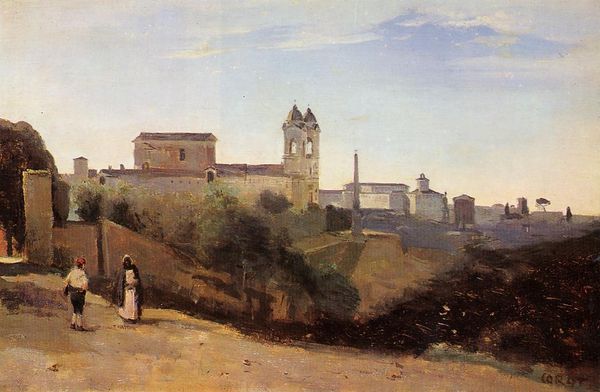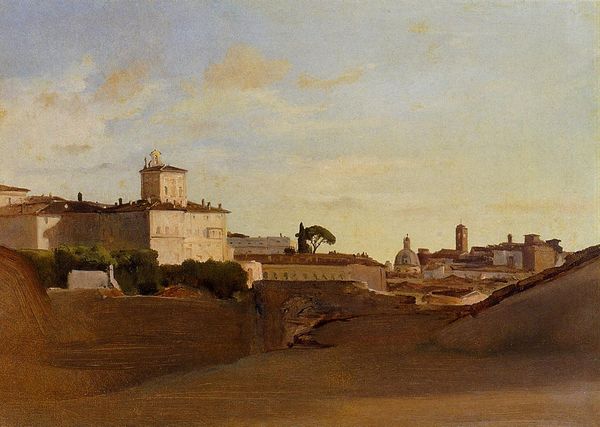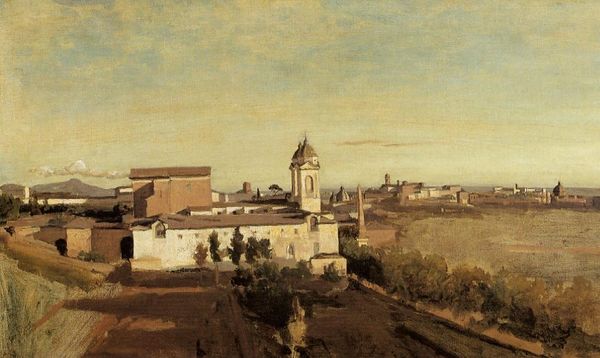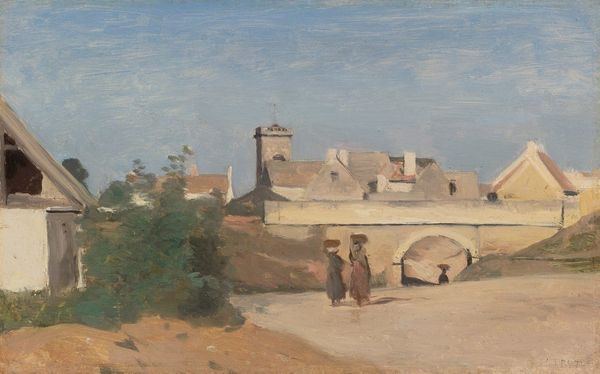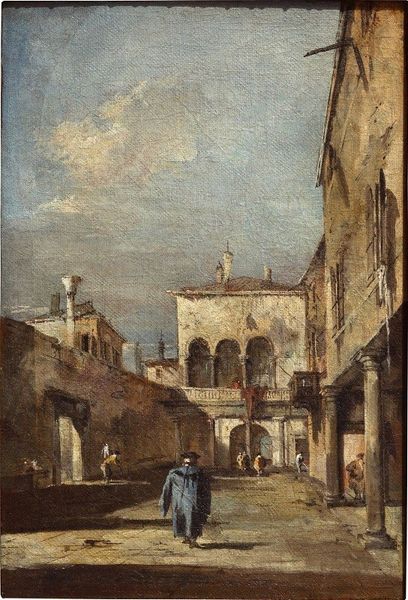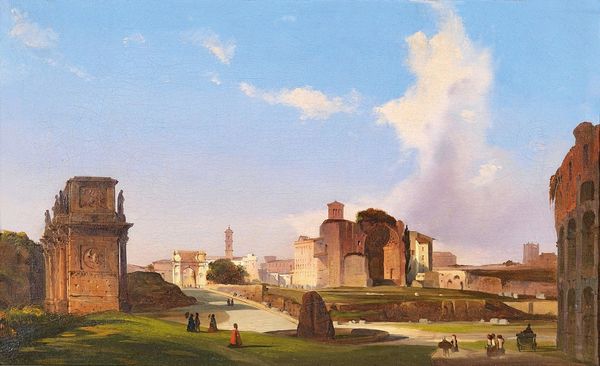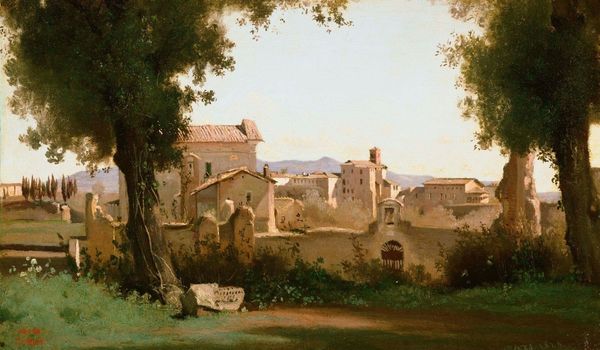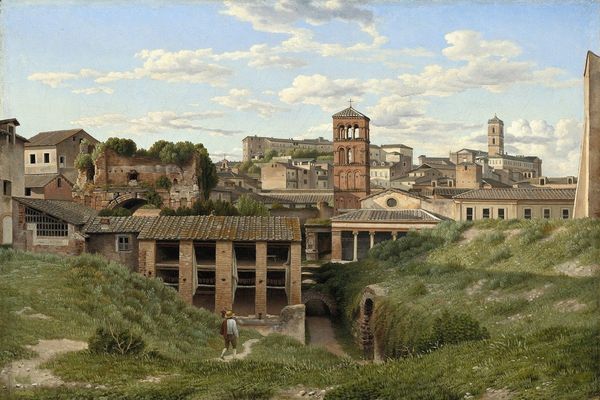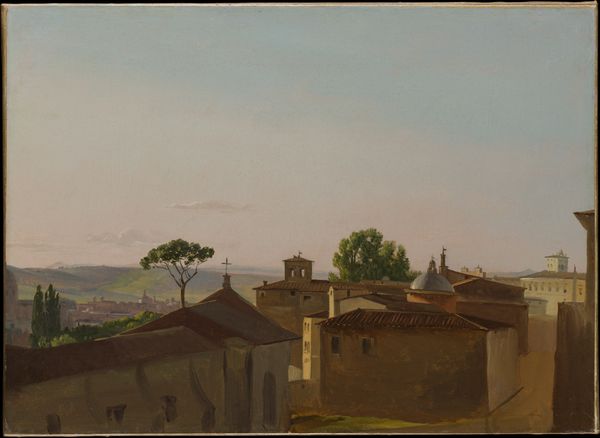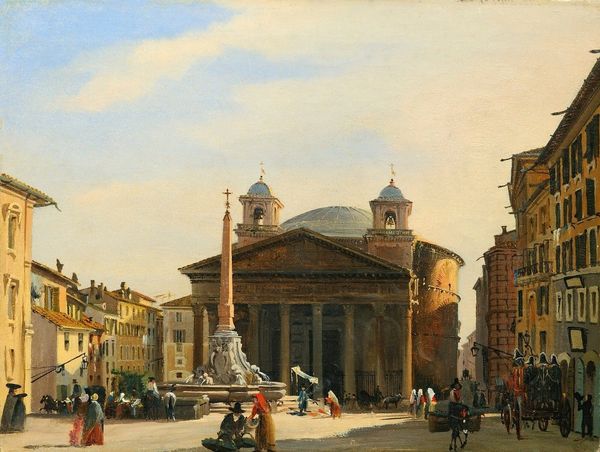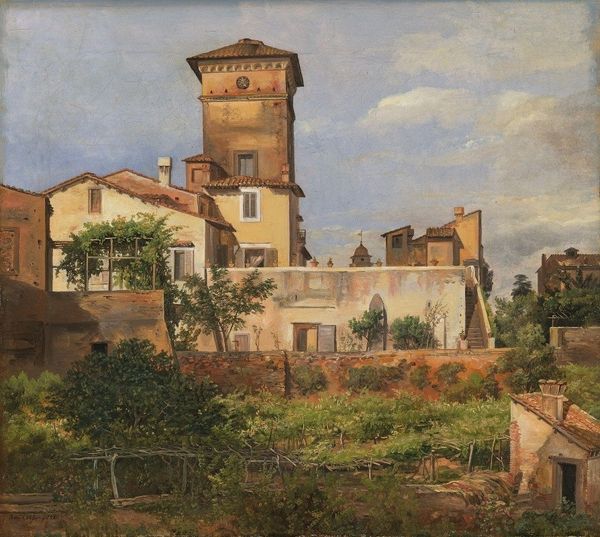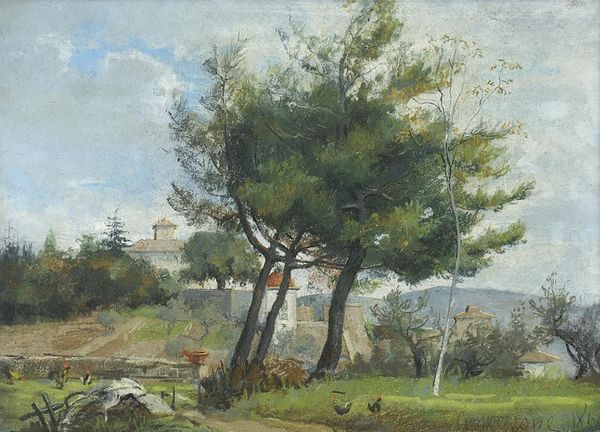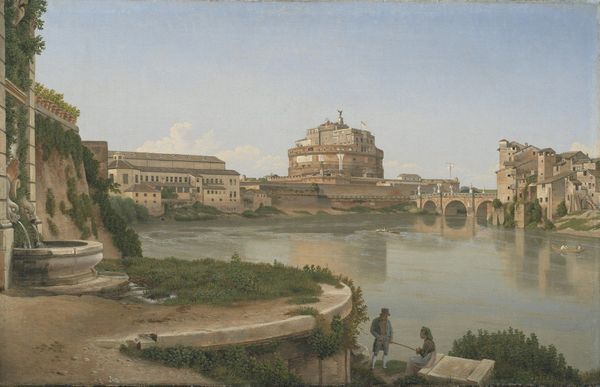
plein-air, oil-paint
#
plein-air
#
oil-paint
#
landscape
#
oil painting
#
romanticism
#
cityscape
#
watercolor
Copyright: Public Domain: Artvee
Curator: This is "Monte Pincio, Rome," an oil on canvas landscape created by Camille Corot sometime between 1840 and 1850. It depicts a serene view from one of Rome’s famed hills. Editor: My immediate impression is one of gentle light and tranquility. The palette is restrained, almost muted, but it creates a calming effect. I love how the figures are so relaxed, almost dissolving into the landscape. Curator: Corot’s plein-air style, painting outdoors directly from nature, captures a specific moment and atmosphere of Rome. He came to define the aesthetics of the city, both by using the views for subject matter but also encouraging new tourists to think differently about the city. The setting of Monte Pincio, of course, had long been a central tourist destination. Editor: Absolutely. Note how Corot has strategically placed an obelisk in the composition; Obelisks held enormous significance for Egyptians who believed the sacred symbols protected them with their magical powers. Even in his time, and certainly for us now, they served to signal Roman permanence. That choice strikes me as very deliberate, nodding to a kind of lasting history and power. Curator: Indeed. And the placement of religious figures creates a direct visual link to institutional religious power. One aspect of what’s really innovative about Corot's artistic project is that his engagement with these older institutions allows him to challenge traditions. In some senses, he democratized this type of picture making; anyone could come to Rome and paint. Editor: I agree. I also read the painting as an essay on stillness. The horizontal emphasis reinforces that placid sense; the city itself rests along the horizon line. Corot, it seems, captured a very unique version of "eternal" Rome. Curator: A lasting record, but also a challenge to lasting social and institutional roles. Corot helps us understand the 19th-century tourist culture and the visual vocabulary that accompanied its rise. Editor: I’m taking away the more personal vision: a reminder to find beauty and meaning in quiet observation, perhaps away from monuments to remember history instead.
Comments
No comments
Be the first to comment and join the conversation on the ultimate creative platform.
